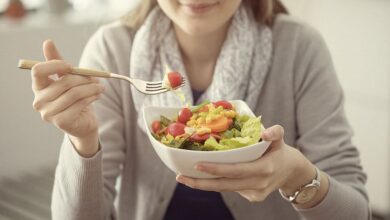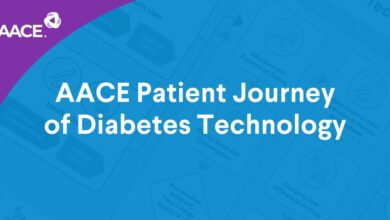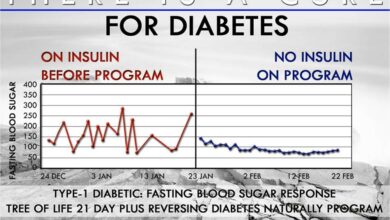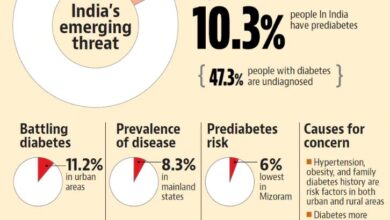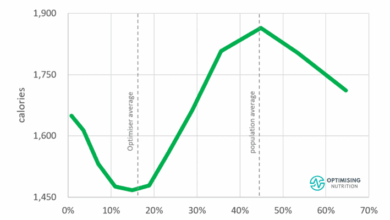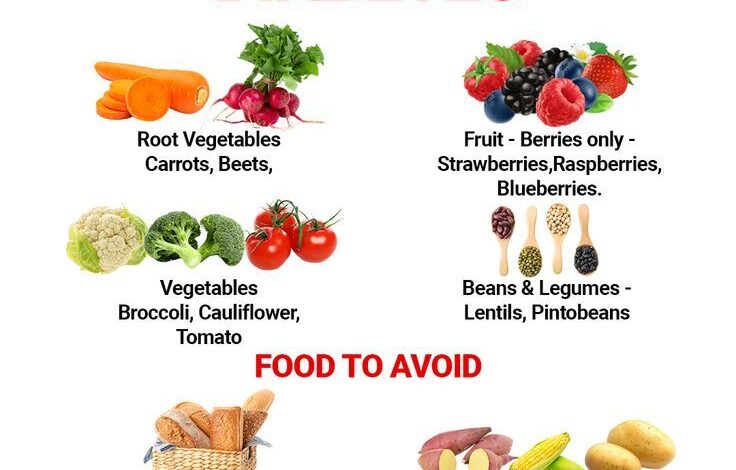
Good carb for diabetes sets the stage for a practical and informative journey through the world of healthy eating for those managing diabetes. We’ll delve into understanding dietary needs, identifying excellent carbohydrate sources, and creating balanced meal plans. This guide empowers you to make smart choices about carbohydrates and maintain stable blood sugar levels.
This comprehensive guide covers everything from understanding different types of carbohydrates and their impact on blood sugar, to practical meal planning tips and recipes. We’ll explore the glycemic index, portion control, and the significance of pairing good carbs with protein and healthy fats. The ultimate goal is to provide you with the knowledge and tools to navigate the complexities of diabetes management through food choices.
Understanding Dietary Needs for Diabetes
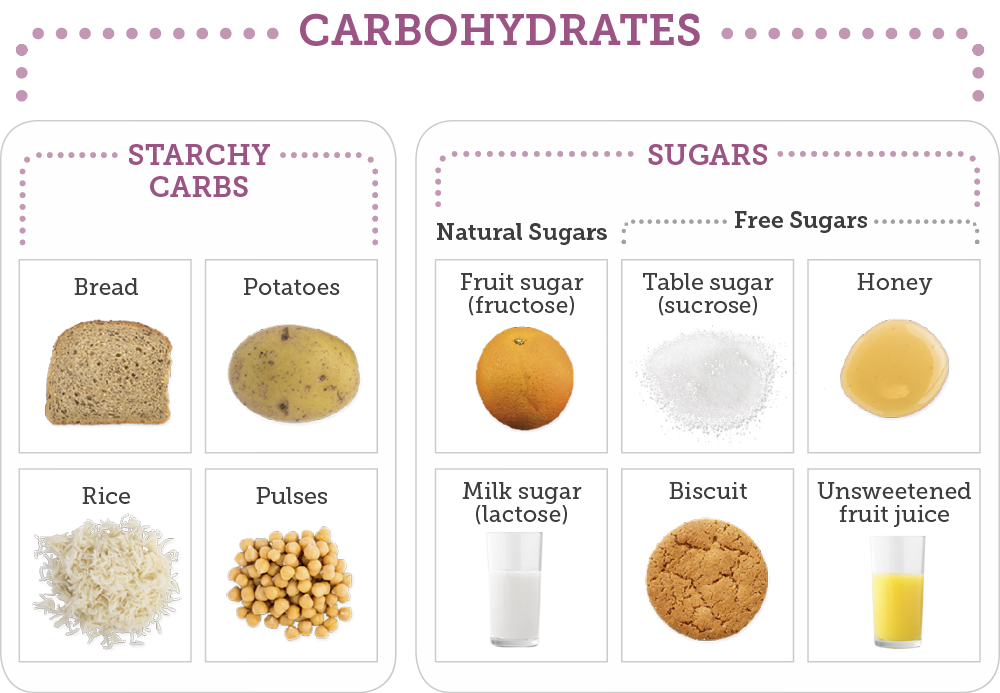
A crucial aspect of managing diabetes effectively is understanding the role of carbohydrates in your diet. Carbohydrates are the primary source of energy for the body, but for individuals with diabetes, careful carbohydrate management is essential to maintain stable blood sugar levels. This involves understanding the different types of carbohydrates, their impact on blood sugar, and the recommended daily intake for effective diabetes management.Carbohydrates are broken down into glucose, which is then absorbed into the bloodstream.
The rate at which this happens varies depending on the type of carbohydrate. This understanding is key to creating a personalized meal plan that helps manage blood glucose levels.
Importance of Carbohydrates in a Diabetic Diet
Carbohydrates are vital for energy production, but their consumption must be carefully managed in diabetes. A balanced intake, coupled with regular physical activity, helps to maintain a healthy blood sugar level. Choosing the right types of carbohydrates can significantly impact blood glucose control.
Types of Carbohydrates and their Impact on Blood Sugar
Carbohydrates are categorized into simple and complex types. Simple carbohydrates, such as sugars found in processed foods and sugary drinks, are rapidly digested, leading to a rapid increase in blood sugar levels. Complex carbohydrates, like those found in whole grains, fruits, and vegetables, are digested more slowly, resulting in a gradual increase in blood sugar.
Recommended Daily Carbohydrate Intake for People with Diabetes
The recommended daily carbohydrate intake for people with diabetes varies depending on individual needs, activity levels, and other health factors. Consult with a healthcare professional or registered dietitian to determine the appropriate amount for your specific situation. This personalized approach is crucial for maintaining optimal blood sugar control.
Glycemic Index and its Role in Choosing Good Carbs
The glycemic index (GI) is a ranking of carbohydrates based on their effect on blood sugar levels. Foods with a high GI cause a rapid rise in blood sugar, while foods with a low GI cause a gradual rise. Understanding the GI of different foods allows individuals to make informed choices that support stable blood glucose levels.
Glycemic Index Comparison Table
| Food | Glycemic Index (GI) | Description |
|---|---|---|
| White bread | 70 | High GI, rapidly digested |
| White rice | 70 | High GI, rapidly digested |
| Sugary drinks | High (varies widely) | Rapidly digested, high sugar content |
| Potatoes (baked) | 75 | High GI, rapidly digested |
| Honey | 60-70 | High GI, high sugar content |
| Whole-wheat bread | 50-60 | Lower GI, more slowly digested |
| Brown rice | 50-60 | Lower GI, more slowly digested |
| Oatmeal | 50-60 | Lower GI, more slowly digested |
| Fruits (e.g., apples, oranges) | 30-60 | Varies based on fruit type; generally lower GI |
| Vegetables (e.g., broccoli, carrots) | Low (generally) | Low GI, fiber-rich, slowly digested |
Note: Glycemic index values can vary depending on preparation methods and portion sizes. Consult reliable sources for accurate information.
Identifying Good Carbohydrate Sources: Good Carb For Diabetes
Navigating the world of carbohydrates can feel overwhelming, especially when managing diabetes. However, understanding which carbs are beneficial and how to incorporate them into your diet is crucial for maintaining stable blood sugar levels and overall health. This section will delve into five key types of good carbohydrate sources, exploring their nutritional value and practical applications in meal planning.Knowing how to choose good carbohydrate sources is fundamental to managing blood sugar effectively.
By understanding the different types of carbohydrates and their impact on blood sugar, individuals with diabetes can make informed food choices that support their health goals. This includes selecting foods that provide sustained energy without causing significant spikes in blood sugar.
Five Types of Good Carbohydrate Sources
A balanced diet for diabetes management necessitates choosing carbohydrates wisely. This involves selecting foods that release glucose into the bloodstream gradually, preventing sharp increases in blood sugar. Good carbohydrate sources are those that are high in fiber, low in added sugars, and provide sustained energy.
- Fruits: Fruits are naturally sweet and packed with vitamins, minerals, and fiber. Fiber slows down the absorption of glucose, preventing rapid spikes in blood sugar. Fruits like berries, apples, and pears are excellent choices. They can be enjoyed fresh, added to smoothies, or incorporated into salads. A typical portion size is about 1/2 cup of fruit.
- Vegetables: Vegetables, particularly non-starchy ones, are low in carbohydrates and high in fiber. They contribute to a balanced meal and provide essential nutrients. Examples include leafy greens, broccoli, and peppers. Vegetables can be enjoyed raw, steamed, or sautéed. A typical portion size is 1 cup of chopped vegetables.
- Legumes: Legumes, such as beans, lentils, and chickpeas, are excellent sources of fiber, protein, and complex carbohydrates. The fiber in legumes helps regulate blood sugar levels. They can be incorporated into soups, salads, or used as a protein source in veggie burgers. A typical portion size is about 1/2 cup cooked beans or lentils.
- Whole Grains: Whole grains like brown rice, quinoa, and oats are rich in fiber, which slows down carbohydrate digestion. They offer sustained energy release and are beneficial for blood sugar control. Whole grains can be used as a base for meals, added to salads, or enjoyed as a side dish. A typical portion size is 1/2 cup of cooked whole grains.
Choosing the right carbs is crucial for managing diabetes, but it’s not just about the what. Understanding why the youngest type 2 diabetes patients are experiencing the most severe health complications, as explored in this insightful article ( why the youngest type 2 diabetes patients are the sickest ), is equally important. Ultimately, focusing on healthy, slow-releasing carbs, combined with regular exercise and a balanced diet, is key to effective diabetes management, no matter your age.
- Dairy Products (Low-Fat): Dairy products like low-fat yogurt and milk can be part of a balanced diabetic diet. They provide protein and calcium, contributing to overall health. Choose low-fat options to minimize fat intake. A typical portion size is 1 cup of low-fat yogurt or milk.
Nutritional Benefits of Each Source
These carbohydrate sources offer a variety of nutritional benefits beyond just blood sugar management. Understanding these benefits allows for a more complete dietary picture.
- Fruits: Packed with vitamins, minerals, and antioxidants. These nutrients support overall health and well-being.
- Vegetables: Provide essential vitamins, minerals, and fiber, promoting digestive health and aiding in nutrient absorption.
- Legumes: A complete protein source, providing all essential amino acids. High in fiber, supporting healthy digestion and blood sugar control.
- Whole Grains: Excellent source of fiber, promoting satiety and supporting digestive health. Also contribute important B vitamins.
- Dairy Products (Low-Fat): Rich in calcium, essential for bone health. Provides protein for muscle building and repair.
Incorporating Sources into Meals
These good carbohydrate sources can be easily incorporated into various meal plans. Here are a few examples:
- Breakfast: Oatmeal with berries and nuts, or a smoothie with fruit and spinach.
- Lunch: Salad with chickpeas and a whole-wheat wrap, or lentil soup with a side of brown rice.
- Dinner: Baked salmon with roasted vegetables and quinoa, or stir-fry with tofu and brown rice.
Portion Sizes for Good Carbohydrate Sources
Maintaining appropriate portion sizes is key to managing blood sugar levels. Adjusting portions based on individual needs and activity levels is important. Consult with a registered dietitian or healthcare professional for personalized recommendations.
Macronutrient Breakdown
The following table provides a general macronutrient breakdown (carbs, protein, fat) for the identified sources. Note that values can vary based on specific preparation methods and ingredients.
| Food Source | Carbs (grams) | Protein (grams) | Fat (grams) |
|---|---|---|---|
| 1/2 cup Berries | 10-15 | 1-2 | 0.5-1 |
| 1 cup Broccoli | 5-8 | 3-4 | 0.5-1 |
| 1/2 cup Cooked Lentils | 10-15 | 7-9 | 1-2 |
| 1/2 cup Cooked Brown Rice | 25-30 | 2-3 | 1-2 |
| 1 cup Low-Fat Yogurt | 10-12 | 8-10 | 1-2 |
Practical Meal Planning for Diabetes
Planning meals for diabetes isn’t about deprivation; it’s about mindful choices that support blood sugar management and overall well-being. Understanding which carbohydrates are beneficial and how to incorporate them into balanced meals is key to a healthy lifestyle. This section provides practical strategies for meal planning, demonstrating how to use good carbs effectively while managing blood sugar levels.Proper meal planning empowers individuals with diabetes to make informed decisions about their food choices.
By incorporating good carbohydrate sources, protein, and healthy fats, you can create delicious and satisfying meals that promote stable blood sugar levels and sustained energy throughout the day.
Incorporating Good Carbs into Balanced Meals
A balanced meal for a diabetic includes a combination of good carbohydrates, lean protein, and healthy fats. This approach helps maintain stable blood sugar levels, providing sustained energy and preventing blood sugar spikes. Prioritizing whole, unprocessed foods is crucial, as these often contain more fiber, which helps regulate blood sugar.
Breakfast Options with Good Carbs
Breakfast is a vital meal, setting the tone for the day’s energy levels and blood sugar control. Good carbohydrate choices, paired with protein and healthy fats, create a satisfying and sustained energy release.
- Oatmeal with berries and nuts: Rolled oats provide complex carbohydrates, while berries offer antioxidants and fiber. Adding nuts provides healthy fats and protein for sustained energy.
- Whole-wheat toast with avocado and eggs: Whole-wheat toast offers complex carbohydrates, while avocado provides healthy fats and fiber. Eggs offer protein, contributing to satiety and balanced blood sugar response.
- Greek yogurt with fruit and granola: Greek yogurt is a good source of protein. Adding fruits and a small amount of granola provides complex carbohydrates and fiber for sustained energy.
Lunch Options with Good Carbs
Lunch should provide sustained energy and help maintain blood sugar stability throughout the afternoon. Pairing good carbs with protein and healthy fats is essential for this.
- Quinoa salad with grilled chicken and vegetables: Quinoa is a complete protein source and offers complex carbohydrates. Grilled chicken provides lean protein, and vegetables offer essential nutrients and fiber.
- Lentil soup with whole-wheat bread: Lentil soup is a filling and nutritious option. Whole-wheat bread provides complex carbohydrates, and the soup offers a combination of fiber and protein.
- Whole-wheat sandwich with lean turkey and lettuce: Whole-wheat bread provides complex carbohydrates, lean turkey delivers protein, and lettuce adds fiber and freshness.
Dinner Options with Good Carbs, Good carb for diabetes
Dinner should be a balanced meal that provides sustained energy and aids in regulating blood sugar levels.
- Baked sweet potato with grilled fish and steamed broccoli: Sweet potatoes offer complex carbohydrates, while grilled fish provides lean protein. Steamed broccoli provides vitamins, minerals, and fiber.
- Brown rice with stir-fried tofu and mixed vegetables: Brown rice offers complex carbohydrates, while tofu provides protein. Mixed vegetables offer vitamins, minerals, and fiber.
- Chicken stir-fry with brown rice noodles and mixed vegetables: Brown rice noodles provide complex carbohydrates. Chicken provides lean protein, and mixed vegetables offer essential nutrients and fiber.
Importance of Portion Control
Portion control is crucial for managing blood sugar levels. Consuming appropriate portions of good carbohydrates, alongside protein and healthy fats, is essential to maintain stable blood glucose levels. Understanding portion sizes and using measuring tools can be helpful.
Pairing Good Carbs with Protein and Healthy Fats
Pairing good carbohydrates with protein and healthy fats is essential for managing blood sugar. Protein slows down the absorption of carbohydrates, preventing rapid spikes in blood sugar. Healthy fats also contribute to satiety and overall nutrient absorption.
Meal Planning Table
| Meal | Good Carbohydrate Choice | Protein | Healthy Fats |
|---|---|---|---|
| Breakfast | Oatmeal, whole-wheat toast | Eggs, Greek yogurt, nuts | Avocado, nuts |
| Lunch | Quinoa, lentil soup, whole-wheat bread | Grilled chicken, lean turkey, tofu | Avocado, nuts |
| Dinner | Sweet potato, brown rice, brown rice noodles | Grilled fish, chicken, tofu | Olive oil, nuts |
Managing Blood Sugar Levels with Good Carbs
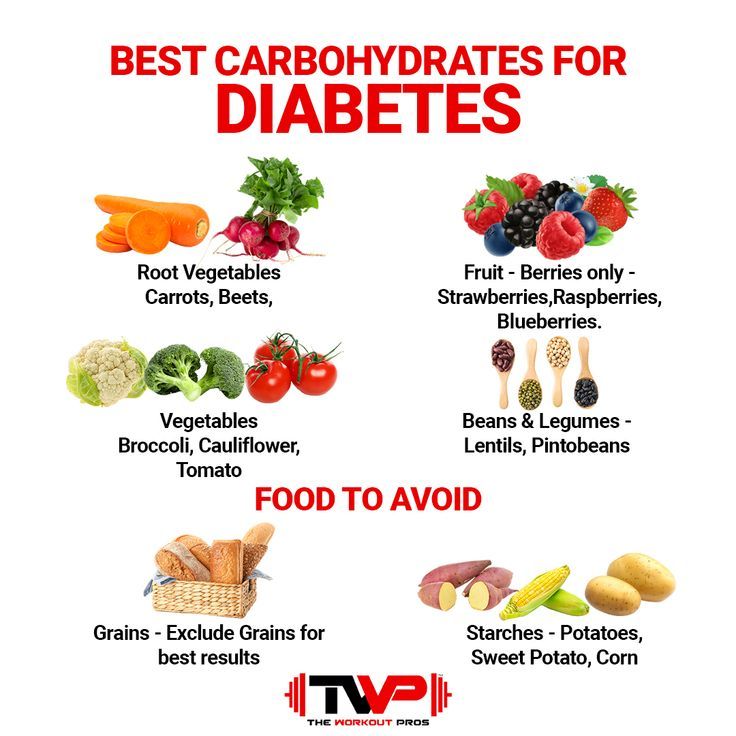
Understanding the connection between carbohydrate types and blood sugar is crucial for managing diabetes effectively. Different types of carbohydrates have varying effects on blood glucose levels. This section explores how smart carb choices can help stabilize blood sugar and Artikels strategies for managing spikes. It also highlights potential risks associated with excessive or insufficient good carb intake.Good carbohydrate choices are not just about the type of carb, but also about the portion size and timing of consumption.
Figuring out good carbs for diabetes can feel overwhelming, especially when you’re navigating managing type 2 diabetes. A great resource for understanding insulin decisions is this helpful guide on type 2 diabetes insulin decision guide. Ultimately, understanding the best carb choices comes down to individual needs and blood sugar responses, so what works for one person might not work for another.
Knowing your body’s reactions to different carbs is key to maintaining healthy blood sugar levels.
A balanced approach to carb intake, along with mindful portion control and regular physical activity, can contribute to better blood sugar management. This is a key component of a comprehensive diabetes management plan.
Impact of Different Carbohydrate Types on Blood Sugar
Different carbohydrates have varying effects on blood sugar levels. Complex carbohydrates, rich in fiber, are digested more slowly, leading to a gradual increase in blood sugar. Simple carbohydrates, on the other hand, are digested quickly, causing a rapid rise in blood sugar. The glycemic index (GI) is a measure of how quickly a carbohydrate raises blood sugar.
Foods with a high GI cause a faster and greater increase in blood sugar compared to those with a low GI.
Strategies for Managing Blood Sugar Spikes
Consuming good carbs alongside fiber-rich foods can help moderate blood sugar spikes. Fiber slows down the absorption of sugar into the bloodstream. Pairing high-GI carbs with protein and healthy fats can also help regulate blood sugar response. For example, having a small portion of brown rice with a serving of lean protein and a side salad can help moderate the spike in blood sugar levels.
Strategies for Preventing Low Blood Sugar
Avoiding overly restrictive carbohydrate intake is also crucial. Prolonged periods of low blood sugar can lead to hypoglycemia, which can be dangerous. The key is finding a balance that meets individual needs while maintaining stable blood sugar levels. A balanced meal plan, consistent with your overall dietary needs, is crucial.
Potential Risks of Excessive or Insufficient Good Carb Intake
Consuming too many good carbs can lead to elevated blood sugar levels, increasing the risk of long-term complications. Conversely, consuming too few good carbs can result in hypoglycemia, a potentially dangerous condition. It’s essential to listen to your body and adjust carb intake accordingly to maintain a healthy blood sugar range.
Table Comparing Impact of Good Carb Choices on Blood Sugar Levels
| Carbohydrate Source | Glycemic Index (GI) | Impact on Blood Sugar (Over Time) |
|---|---|---|
| Brown Rice | Medium | Gradual rise, sustained energy |
| Sweet Potatoes | Medium | Moderate rise, sustained energy |
| Whole Wheat Bread | Medium | Moderate rise, sustained energy |
| White Bread | High | Rapid rise, potential for blood sugar spikes |
| Fruit (e.g., Banana) | High | Rapid rise, potential for blood sugar spikes |
Beyond the Basics
Understanding good carbs for diabetes goes beyond simply identifying sources. It involves a nuanced approach to how we prepare and consume these foods. This section delves into advanced considerations, exploring how cooking methods, portion sizes, and even cultural influences affect blood sugar management. We’ll also emphasize the crucial role of personalized dietary advice from a registered dietitian.
Cooking Methods and Glycemic Index
Different cooking methods significantly impact the glycemic index (GI) of carbohydrates. This is because cooking processes can alter the structure of starches, affecting how quickly our bodies break them down and absorb glucose. For example, steaming or baking often result in a lower GI compared to frying or deep-frying. The more a carbohydrate is processed, the more likely it is to have a higher GI.
| Cooking Method | Impact on Glycemic Index | Example |
|---|---|---|
| Steaming | Generally low GI | Steamed broccoli, carrots, or quinoa |
| Baking | Generally moderate GI | Baked sweet potatoes, whole-wheat bread |
| Frying | Generally high GI | Fried potatoes, fried rice |
| Roasting | Moderate to high GI, depending on the food and method | Roasted vegetables, roasted chicken (indirectly impacts the GI of accompanying carbs) |
| Boiling | Generally moderate GI | Boiled potatoes, pasta |
Factors Influencing Blood Sugar Response
Several factors can influence how good carbs affect blood sugar levels. Beyond cooking methods, portion size plays a crucial role. A larger portion of any carbohydrate will result in a higher blood sugar spike. The type of carbohydrate itself is a factor, as different starches have different structures. The timing of meals and other foods consumed alongside the carbohydrate also matters.
Finding good carbs for diabetes management can be tricky, but it’s definitely achievable! It’s inspiring to see how a woman’s decision to embrace her vitiligo and join the awareness effort, like the one detailed in this article about woman decides to stop covering vitiligo joins awareness effort , demonstrates strength and courage. This highlights the power of embracing differences and taking a stand, just like choosing the right carbs can help manage diabetes effectively.
For example, consuming a good carb with protein and healthy fats can slow down the absorption of sugar into the bloodstream, leading to a more controlled response.
Choosing Good Carbs from Different Cultures
Culinary traditions worldwide offer a wealth of good carb options. When choosing good carbs from different cultures and cuisines, consider the preparation methods and ingredients used. For instance, Mediterranean cuisine often emphasizes whole grains, legumes, and vegetables prepared with olive oil, herbs, and spices, which are often lower in GI. Asian cuisines, while offering delicious good carb options, might use higher-GI ingredients, so it’s vital to understand the preparation methods and ingredients.
Personalized Dietary Advice
While this information provides valuable insight, personalized dietary advice is essential for optimal blood sugar management. A registered dietitian can assess individual needs, health conditions, and preferences to create a tailored meal plan. They can help determine appropriate portion sizes, cooking methods, and the best carbohydrate choices for specific dietary goals and lifestyle. This individualized approach ensures that the plan aligns with overall health goals and considers potential interactions with other medications or health conditions.
Consulting a registered dietitian is highly recommended for personalized dietary advice, especially for individuals with diabetes.
Good Carb Recipes & Illustrations
Discovering delicious and healthy ways to incorporate good carbohydrates into your diabetic-friendly diet is key to managing blood sugar levels and enjoying satisfying meals. This section dives into a specific recipe showcasing a good carbohydrate source, providing detailed preparation steps, nutritional information, and highlighting the associated health benefits.This recipe utilizes a good carbohydrate source that provides sustained energy and promotes overall well-being, while being mindful of portion sizes and mindful consumption to maintain balanced blood sugar levels.
A Hearty Quinoa and Vegetable Bowl
This recipe features quinoa, a complete protein and excellent source of complex carbohydrates, paired with nutritious vegetables. The combination offers a balanced meal that’s both satisfying and beneficial for managing blood sugar.
Recipe Ingredients
This section Artikels the ingredients required for the recipe. Each ingredient is crucial for the overall nutritional profile and flavor of the dish.
| Ingredient | Description | Image |
|---|---|---|
| 1 cup Quinoa | Light beige-colored, fluffy grain | Image of uncooked quinoa, slightly puffed, showcasing its texture. |
| 1 cup Broccoli florets | Bright green, tightly clustered florets | Image of broccoli florets, showing their vibrant color and shape. |
| 1 cup Bell peppers (various colors) | Varying shades of red, orange, and yellow | Image of sliced bell peppers, showing their different colors and textures. |
| 1/2 cup Cherry tomatoes | Small, round, red tomatoes | Image of cherry tomatoes, showcasing their round shape and vibrant red color. |
| 1/4 cup chopped red onion | Thinly sliced, translucent red onion | Image of chopped red onion, showing its translucent appearance. |
| 2 tablespoons Olive oil | Clear, slightly golden liquid | Image of olive oil in a small container or measuring spoon. |
| 1 teaspoon Dried oregano | Dark, aromatic herb | Image of a small pile of dried oregano. |
| Salt and pepper to taste | White crystals and black peppercorns | Image of salt and pepper shakers, with salt and pepper visible. |
Preparation Instructions
Detailed instructions guide you through each step of preparing the recipe, ensuring a consistent and enjoyable outcome.
- Rinse the quinoa in a fine-mesh sieve until the water runs clear. This removes any excess starch.
- In a medium saucepan, combine the rinsed quinoa with 2 cups of water and bring to a boil.
- Reduce heat to low, cover, and simmer for 15-20 minutes, or until all the water is absorbed and the quinoa is cooked through.
- While the quinoa is cooking, heat the olive oil in a large skillet over medium heat.
- Add the broccoli, bell peppers, and cherry tomatoes to the skillet and cook for 5-7 minutes, or until the vegetables are tender-crisp.
- Stir in the chopped red onion and dried oregano. Cook for another minute, until the onion is softened.
- Season with salt and pepper to taste.
- Fluff the cooked quinoa with a fork.
- Combine the cooked quinoa with the sauteed vegetables.
- Serve warm.
Nutritional Information (per serving)
This table presents the estimated nutritional content of a single serving of the quinoa and vegetable bowl. Note that exact values may vary slightly depending on specific ingredient quantities and preparation methods.| Nutrient | Amount ||——————-|————–|| Calories | ~450 || Protein | ~15g || Carbohydrates | ~60g || Fiber | ~8g || Fat | ~10g |
Health Benefits of Quinoa
Quinoa is a complete protein, meaning it contains all essential amino acids. It’s also a good source of fiber, which aids digestion and helps regulate blood sugar levels. This makes it an excellent choice for individuals with diabetes.
Epilogue
In conclusion, choosing the right carbohydrates is crucial for managing diabetes effectively. This guide has explored the importance of understanding your dietary needs, identifying good carb sources, and implementing practical meal planning strategies. Remember, consistency and mindful choices are key. By incorporating the tips and strategies presented here, you can take control of your diabetes management through delicious and nutritious meals.
Consult with a healthcare professional or registered dietitian for personalized advice tailored to your specific needs.
